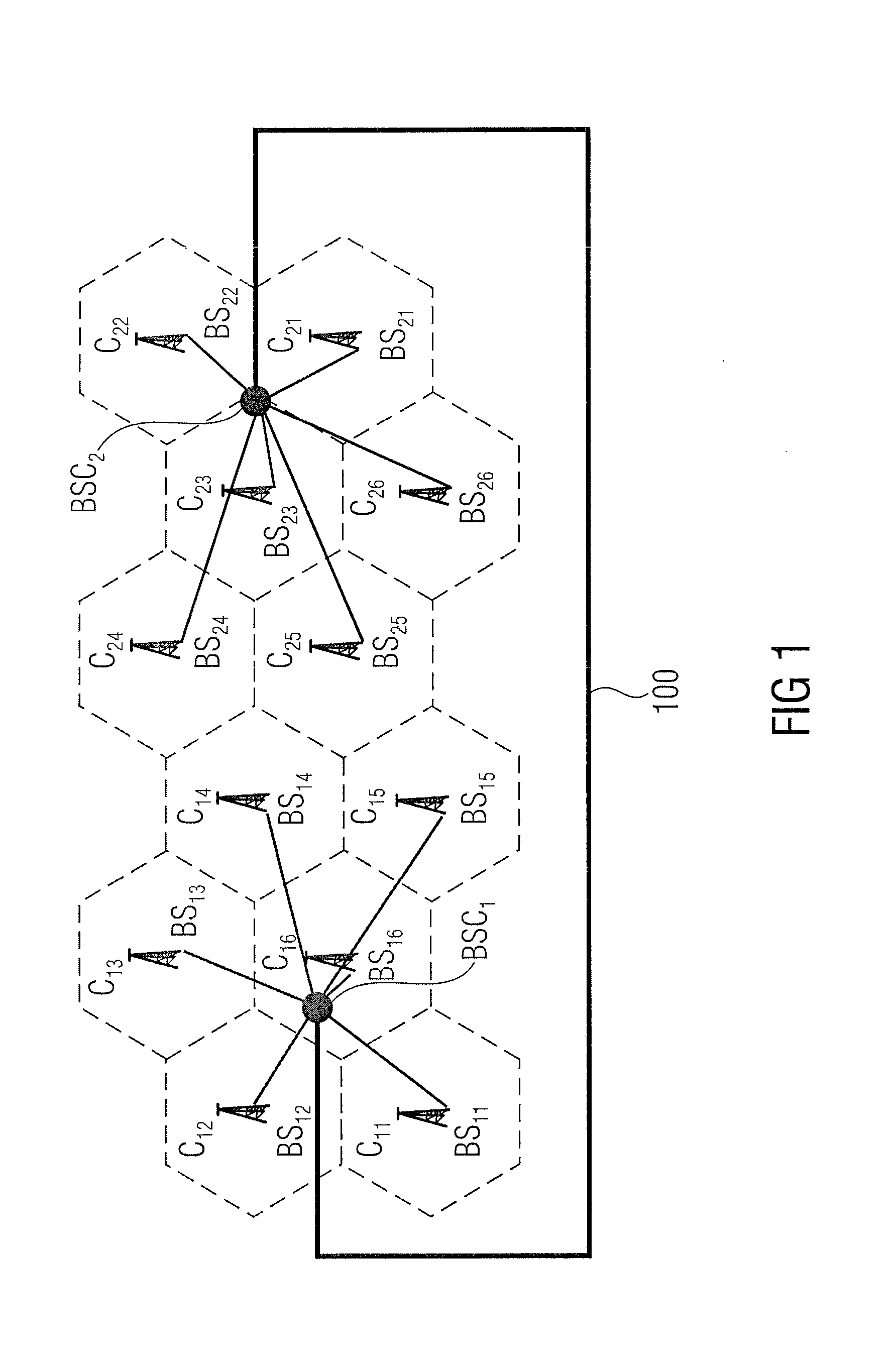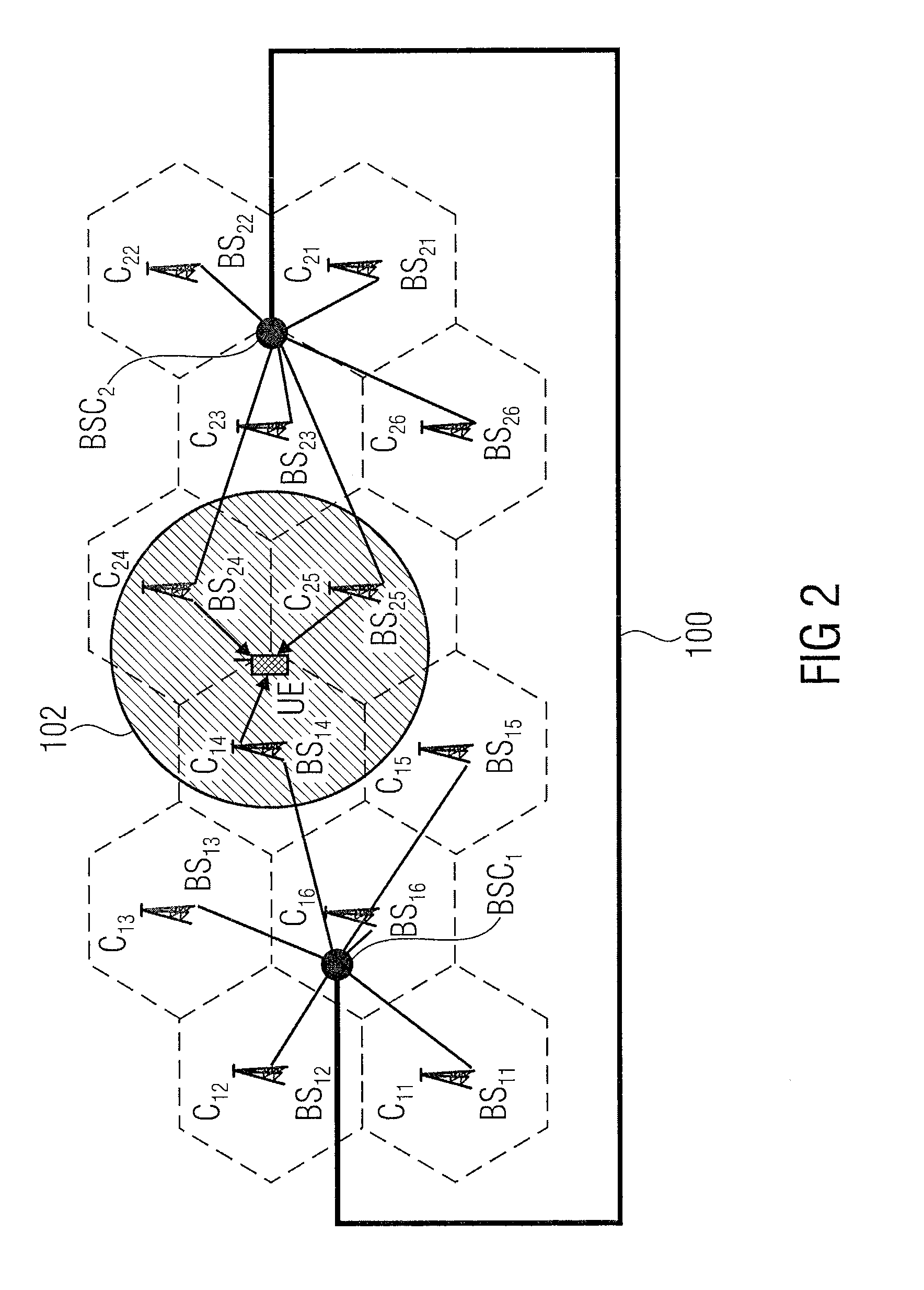Method for coordinated multipoint (COMP) transmission/reception in wireless communication networks with reconfiguration capability
a wireless communication network and wireless communication technology, applied in the direction of digital transmission, data switching network, data switching by path configuration, etc., can solve the problems of inability to support comp techniques, inability to use latency, and inability to achieve desired wireless cluster b>102/b>, so as to improve user throughput, the effect of sufficient capacity and latency
- Summary
- Abstract
- Description
- Claims
- Application Information
AI Technical Summary
Benefits of technology
Problems solved by technology
Method used
Image
Examples
Embodiment Construction
[0036]With regard to FIGS. 6 and 7 an embodiment of the invention is described. More specifically, a wireless clustering preceding a wireline clustering plus a network reconfiguration is described.
[0037]FIG. 6 shows a flow diagram indicating the respective steps carried out in accordance with this embodiment, and FIG. 7 depicts, on the basis of a network of FIG. 5, the clustering process for serving two user equipments UE1 and UE2 in accordance with a CoMP technique. At step S200 the transmission / reception properties between the user equipments UE1 and UE2, respectively, are determined. On the basis of the wireless properties for example, RSRQ or signal-to-interference noise ratio (SINR) the wireless clustering is done in step S202 yielding the wireless clusters 2001 and 2002 including the base stations providing sufficient wireless channel properties for serving the user equipment UE1 and UE2, respectively. With other words, one or more cooperating base stations for a coordinated ...
PUM
 Login to View More
Login to View More Abstract
Description
Claims
Application Information
 Login to View More
Login to View More - R&D
- Intellectual Property
- Life Sciences
- Materials
- Tech Scout
- Unparalleled Data Quality
- Higher Quality Content
- 60% Fewer Hallucinations
Browse by: Latest US Patents, China's latest patents, Technical Efficacy Thesaurus, Application Domain, Technology Topic, Popular Technical Reports.
© 2025 PatSnap. All rights reserved.Legal|Privacy policy|Modern Slavery Act Transparency Statement|Sitemap|About US| Contact US: help@patsnap.com



